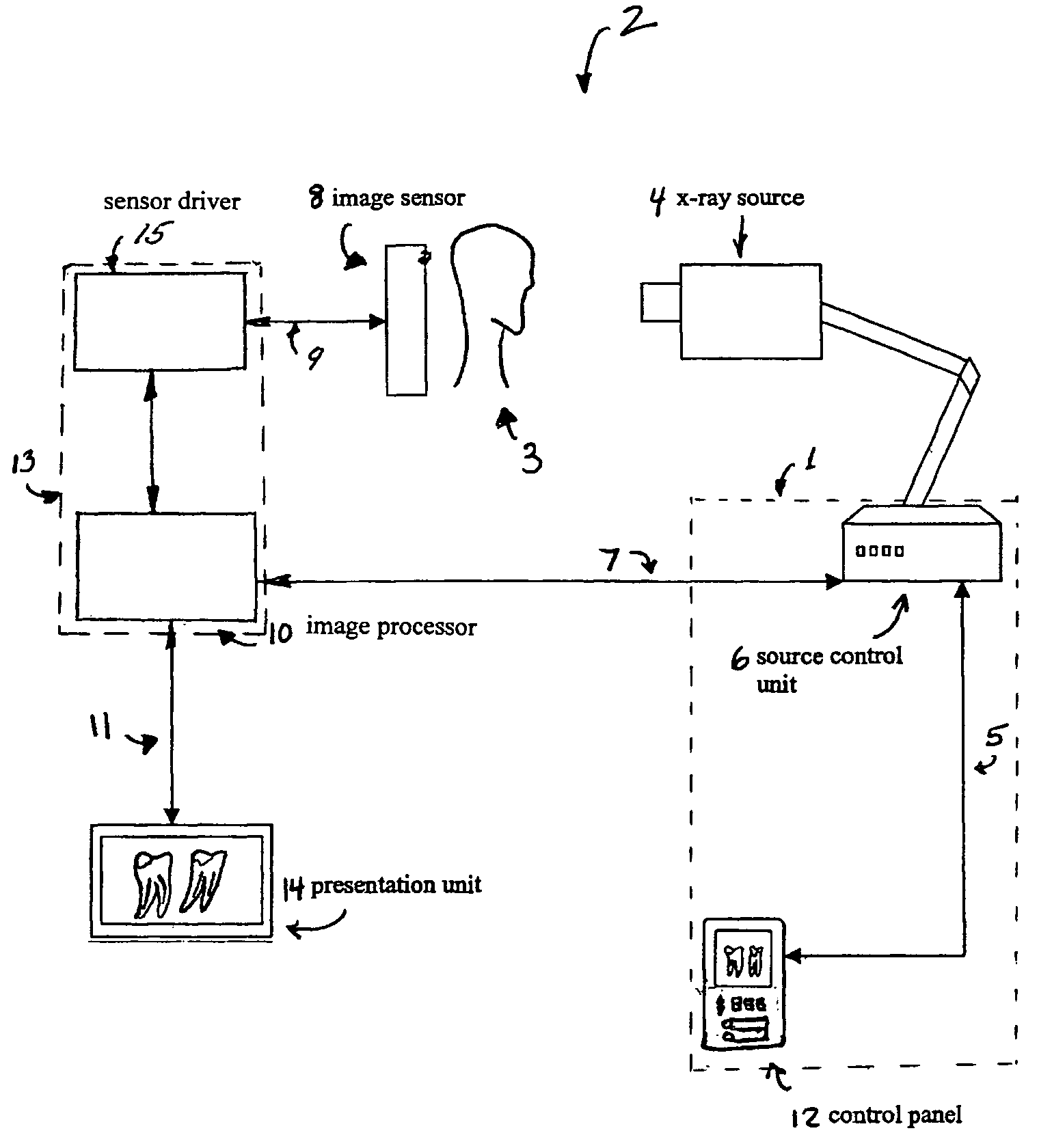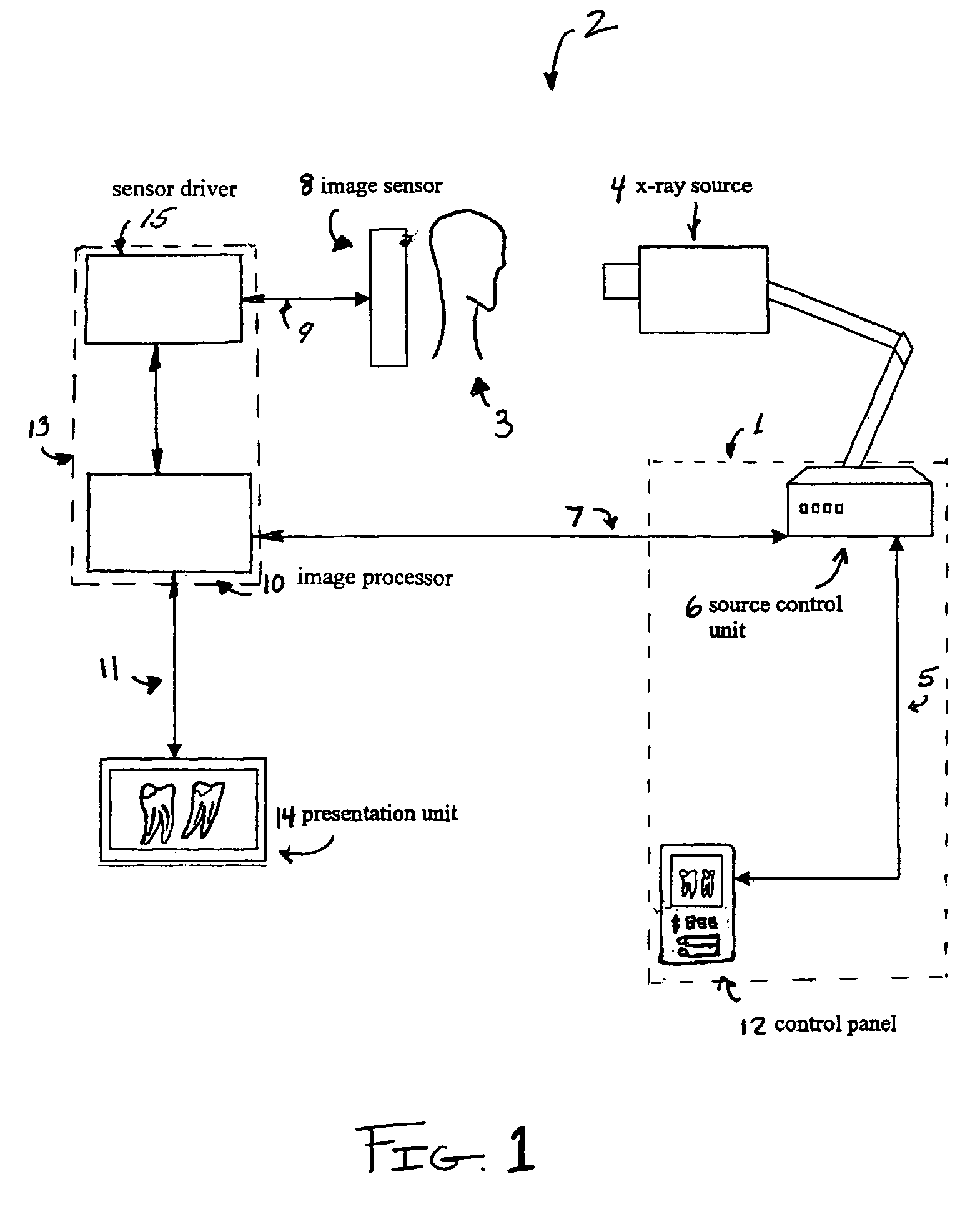Integrated digital dental x-ray system
a digital x-ray and diagnostic system technology, applied in the field of integrated digital x-ray diagnostic system, can solve the problems of large image sensor arrangement, need of precise amplitude and timing of shifting clocks, and significant technical limitations in the art, so as to improve the productivity and workflow efficiency of the dental office, increase the quality of x-ray images, and efficiently capture, view and manipulate.
- Summary
- Abstract
- Description
- Claims
- Application Information
AI Technical Summary
Benefits of technology
Problems solved by technology
Method used
Image
Examples
Embodiment Construction
[0023]The present invention discloses a system and method for efficiently integrating x-ray generation and detection techniques. The system provides the ability to calculate and communicate the optimal radiation settings of a certain category and opacity of tooth in consideration of the specific physical anatomy of the subject patient. The system provides an arrangement whereby each component is electronically coupled to its corresponding functional mate providing for efficient signal transduction and communication of the exposure times to both the image sensor and x-ray source thereby coordinating their respective activities without the need for separate radiation sensing components. The system further provides the ability to view and manipulate the captured images at the point of x-ray source initiation.
[0024]In the following description, for purposes of explanation, numerous details are set forth in order to provide a thorough understanding of the present invention. However, it w...
PUM
 Login to View More
Login to View More Abstract
Description
Claims
Application Information
 Login to View More
Login to View More - R&D
- Intellectual Property
- Life Sciences
- Materials
- Tech Scout
- Unparalleled Data Quality
- Higher Quality Content
- 60% Fewer Hallucinations
Browse by: Latest US Patents, China's latest patents, Technical Efficacy Thesaurus, Application Domain, Technology Topic, Popular Technical Reports.
© 2025 PatSnap. All rights reserved.Legal|Privacy policy|Modern Slavery Act Transparency Statement|Sitemap|About US| Contact US: help@patsnap.com



